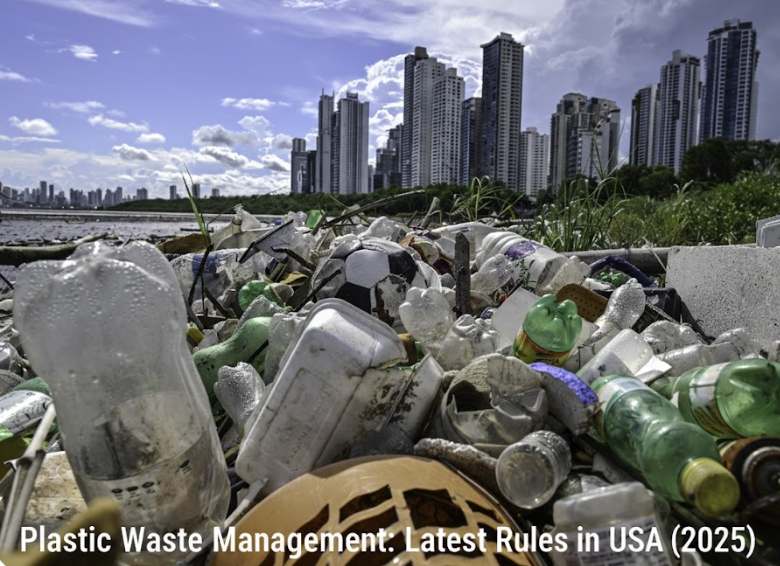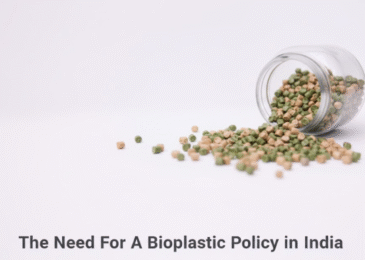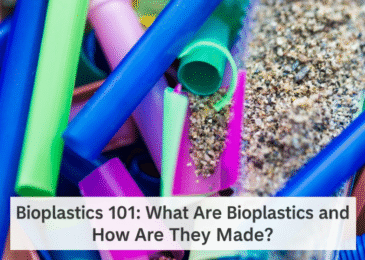Plastic waste management rules in the USA are increasing and they must, because the scale of the problem is enormous.
The United States already generates more plastic waste than any other country. That number is also expected to exceed 40 million tons in 2025.
So what happens to all that plastic?
- About 70-75% ends up in landfills.
- Around 12-18% is incinerated. It is burned for energy but still releases harmful emissions.
- Only about 5-13% is actually recycled. And roughly 2% is exported for recycling, mostly to Canada and Mexico.
Since most of the plastic is left to linger for centuries, the consequences of inefficient waste management are severe.
Plastic waste clogs rivers and harms marine life. It also adds toxic chemicals into the environment.
Microplastics have also been found in human blood. Most of these are PET plastics (used in drinks bottles) and polystyrene (used for packaging food) (according to a 2022 study).
To tackle the crisis, the USA has started enforcing laws to reduce and recycle plastic products.
What are the new laws for plastic waste management in USA?
To shift the needle on plastic pollution, the USA’s EPA (Environment Protection Agency) is pushing for upstream policies that:
- limit unnecessary plastics (The Farewell to Foam Act)
- protect natural places (Reducing Waste in National Parks Act)
- promotes recycling (Break Free From Plastic Pollution Act)
It also plans to strengthen recycling through better sorting technologies and state grants for infrastructure upgrades. The strategy is meant to line up with the 5 R’s of waste management (Refuse, Reduce, Reuse, Recycle, Recover).
The Break Free From Plastic Pollution Act is the most comprehensive. If passed, would include:
- National Extended Producer Responsibility (EPR) to make producers pay to collect and recycle packaging
- Bans on problematic single-use plastics
- Uniform labeling and recyclability standards
In practice, many of these changes are only present at the state level.
Which USA States Have the Most Important Plastic Waste Management Laws in 2025?
Certain states in the USA have always been testing grounds for new plastic waste management laws in the USA.
At present, only seven states have passed EPR laws to limit wasteful packaging. They are the first to shift weak regulation to measurable accountability in the country.
California has the most ambitious packaging law (SB 54). It demands that at least 30% of single-use plastic packaging must be recyclable or compostable by 2028 (rising to 65% by 2032).
The law also shifts the cost of recycling from taxpayers and municipalities onto producers. Over ten years, producers have been asked to provide $5 billion to support recycling systems and plastic pollution mitigation.
There was also a specific requirement. According to the rules, producers had to hit a 25% recycling rate by January 1, 2025, to continue using expanded polystyrene (EPS) foodware. However, the target was not met and California now bans the sale, distribution and import of EPS foodware (cups, takeout boxes).
Meanwhile, CalRecycle (California Department of Resources Recycling and Recovery) is still drafting and revising plastic waste rules to fully implement SB 54.

Maine was the first state to enact an EPR law in the USA in 2021. That law requires all producers to register and report how much packaging they place on the market in Maine by May 2026.
Meanwhile, Colorado’s HB 22‑1355 similarly builds an EPR system set to begin in 2026. Producers will join a nonprofit Producer Responsibility Organization (PRO), report their packaging outputs, and pay dues. Those who don’t comply may be barred from selling covered items beginning July 1, 2025.
Likewise, the Recycling Modernization Act (SB 582) mandated that Oregon producers of packaging and related items join a PRO. The law officially started in July 2025.
The state also passed SB 543 in 2023, which banned the sale of foam packing peanuts and packaging with intentionally added PFAS (forever plastics) from January 1, 2025.
Maryland and Washington have enacted EPR laws just this year.
The former’s EPR rule (SB 901) covers materials made of plastic, paper, metal or glass. It also mandates producers of food-service ware and beverage containers to join a PRO by July 1, 2026.
Maryland expects to cut over 1 million metric tons of CO₂ and create more than 2,000 jobs with the new law. A state assessment also estimated it could push recycling from 34% to over 50%.
In Washington, the Recycling Reform Act (E2SSB 5284) mirrors Maryland’s plastic waste management provisions. It brings packaging and paper under EPR. Under the new law, producers have to register by 2026 and gradually assume more financial burden for statewide recycling services.
Overall, each EPR law requires companies to pay for managing the packaging waste they produce.
This money funds recycling systems, infrastructure, and consumer education.
Here is a list of all seven USA states with plastic waste regulations.
| State | EPR for Packaging? | Major Plastic Bans / Mandates |
| California | SB 54 in force | Polystyrene foodware banned; stricter labeling; recycled content mandates |
| Oregon | EPR starts July 1, 2025 | Single-use packaging & foam bans; eco‑modulated fees |
| Colorado | Law passed, implementation 2026 | Bans on plastic bags and foam containers |
| Maine | Existing EPR law | Some single-use bans (bags) |
| Maryland | SB 901 signed May 2025 | Foam foodware ban, reporting & recycling targets |
| Washington | SB 5284 signed May 2025 | Bans on foam, bags, utensils; bottled PCR mandate |
| Minnesota | EPR law passed 2024 | Some local single-use restrictions |
Importantly, even states without full EPR laws are pushing single-use plastic bans to cut waste at the source in the US. Most target single-use items, including foam EPS cups, plastic bags and utensils.
EPS (also known by the brand name Styrofoam) sticks around for centuries in soils and waterways, and is very hard to recycle or repurpose. So, these bans are aimed to cut waste before it enters the system.
Delaware, Rhode Island, and Hawaii, launched bans on EPS foam packaging and products in January of 2025.
In Virginia, bigger food vendors can’t use EPS starting July 1, 2025 (full compliance is in the works by 2026). New York and New Jersey also passed similar bans.

How are these new plastic waste management laws changing business and recycling in the USA?
The new US state plastic policies aim to discontinue the “make, sell, and forget” approach in 2025. Under new rules, packaging producers, retailers, and brands have to:
- Register with state Producer Responsibility Organizations (PROs)
- Pay fees based on how much packaging they put into the market
- Submit regular reports on packaging materials and quantities
The fee is also eco-modulated. Meaning packaging that’s harder to recycle (like multi-layered films or colored plastics) requires a higher fee. Because of such plastic waste regulations, companies in the USA would need to rethink designs to use more:
- Recyclable,
- Compostable, or
- Less plastic in their packaging.
Some states have also passed laws for stricter labeling requirements. For example, California’s SB 343 makes it illegal to display recycling symbols on packaging that is not recyclable in the state’s systems.
In short, new plastic waste rules are taking shape slowly in the USA this year. But reality is never tidy.
Patchwork regulation is one serious hurdle. Every state’s EPR law is different in terms of fee structures and reporting rules. This could make it difficult for a brand, that is selling products nationwide, to navigate seven or more rulebooks.
Second, recycling rates remain stubbornly low. Across the USA, plastic recycling hovers below 13%.
Why is it so low? There are a few reasons:
- A lot of collected plastic never makes it through sorting because of wrong items in the bin or low-quality materials.
- Only certain plastics (like clear PET bottles) have enough market demand to be recycled.
- Third, the market for recycled plastic is under pressure. Virgin plastic remains very cheap. The oversupply of this new plastic makes recycled material less competitive.
Also, about 40% of collected plastic is lost in sorting or contamination before reuse.
At Ukhi, we want to reduce the burden of plastic waste management. We have built injection moulding biopolymer alternatives for plastic packaging. Our compostable bio plastics are made from agricultural waste, which supports new policy and helps shift economics toward circular supply.
FAQs
What are the new rules for plastic waste in the US?
New plastic waste management rules in the USA are making producers responsible for recycling and waste collection costs. The EPR laws ban certain single‑use plastics and impose recycled content mandates on packaging and foodware.
What is the USA doing to reduce plastic waste?
The US is pushing the EPA’s National Strategy to prevent plastic pollution and cut waste upstream. Some states are expanding EPR frameworks to invest in recycling infrastructure. Other US states are regulating with single-use plastic bans.
Which states now have EPR laws for packaging?
Seven states in the USA, California, Colorado, Maine, Maryland, Minnesota, Oregon and Washington have enacted EPR rules for plastic and paper packaging.
What is California’s new plastic waste rule, SB 54?
California’s SB 54 mandates that by 2028, 30% of single‑use packaging be recyclable or compostable. It then rises to a goal of 65% recovery by 2032 and eco‑modulated fees.
What are the main challenges in USA plastic waste management?
The USA has a traditional low recycling rate. Market competition with virgin plastic, contamination, and inconsistent state rules are challenging effective plastic waste management in the country.






